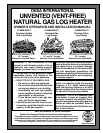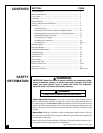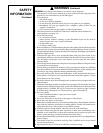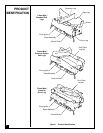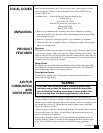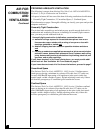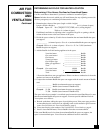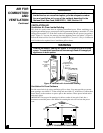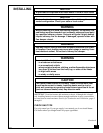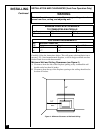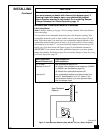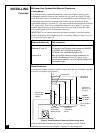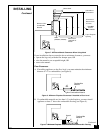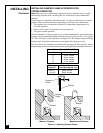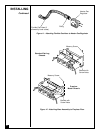
6
103309
PROVIDING ADEQUATE VENTILATION
The following is exerpts from National Fuel Gas Code. NFPA 54/ANSI Z223.1,
Section 5.3, Air for Combustion and Ventilation.
All spaces in homes fall into one of the three following ventilation classifications:
1. Unusually Tight Contruction; 2. Unconfined Space; 3. Confined Space.
The information on pages 5 through 8 will help you classify your space and provide
adequate ventilation.
Unusually Tight Construction
The air that leaks around doors and windows may provide enough fresh air for
combustion and ventilation. However, in buildings of unusually tight construc-
tion, you must provide additional fresh air.
Unusually tight construction is defined as construction where:
a. walls and ceilings exposed to the outside atmosphere have a con-
tinuous water vapor retarder with a rating of one perm or less with
openings gasketed or sealed
and
b. weather stripping has been added on openable windows and doors
and
c. caulking or sealants are applied to areas such as joints around window
and door frames, between sole plates and floors, between wall-ceiling
joints, between wall panels, at penetrations for plumbing, electrical, and
gas lines, and at other openings.
If your home meets all of the three criteria above, you must provide addi-
tional fresh air. See
Ventilation Air From Outdoors
, page 8.
If your home does not meet all of the three criteria above, proceed to page 7.
Unconfined Space
The National Fuel Gas Code, ANSIZ223.1, 1992, Section 5.3 defines uncon-
fined space as having a minimum air volume of 50 cubic feet (127 cubic cm)
for each 1000 Btu/Hr input rating of all appliances in the space (cubic feet
equals length x width x height of space). Include adjoining rooms only if there
are doorless passageways or ventilation grills between the rooms.
Confined Space
The National Fuel Gas Code, ANSIZ223.1, 1992, Section 5.3 defines confined
space as having an air volume of less than 50 cubic feet (127 cubic cm) for
each 1000 Btu/Hr input rating of all appliances in the space (cubic feet equals
length x width x height of space). Include adjoining rooms only if there are
doorless passageways or ventilation grills between the rooms.
AIR FOR
COMBUSTION
AND
VENTILATION
Continued



